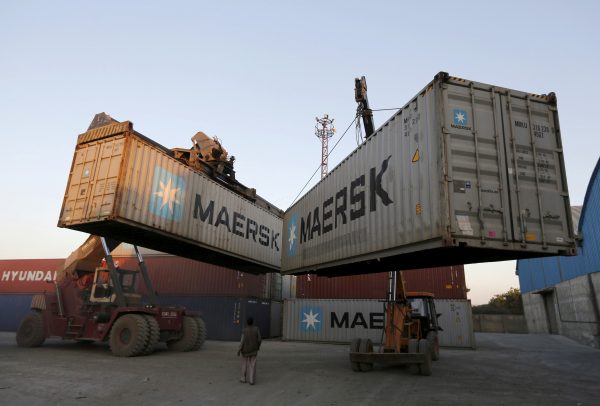While privately owned ports in India have been augmenting their performance and facilities in recent years, the capacities of public ports have also been steadily increasing. This has been made possible by the removal of obsolete cargo procedures coupled with an influx of investment in technology and automation. Still, the gap between public and private ports in terms of modernised infrastructure and pace of operations will remain a challenge unless considerable and tangible changes occur in both policy and operations at public ports.
The enhancement of port capacities and efficiency is a vital component of the Sagarmala initiative, especially since India is projected to handle an estimated 2.5 billion tonnes of cargo by 2025. To bridge the gap between demand and supply, six new greenfield ports have been identified for expansion and development. The digitisation of port operations has been another important feature with manual forms eliminated.
Sagarmala is also targeting poor road and rail connectivity, which increases both time and expenses involved in cargo movement. To improve hinterland connectivity, the Indian Port Rail Corporation (IPRCL) was set up. The IPRCL is undertaking a range of projects across ports on the west and east coast of the country, which include proving railway tracks for enabling faster transport, extending existing tracks, up-grading railway station platforms and so on. Many projects under the Sagarmala initiative are being implemented in conjunction with other connectivity and infrastructure projects of the government to ensure that transportation systems are realised in a holistic manner. Some of these projects include dedicated freight corridors, highway development programmes, industrial corridors and special economic zones.
So far, 89 projects under the Sagarmala programme have been completed with another 443 in different stages of completion. The traffic handled at ports has increased steadily, along with an increase in cargo-handling capacity. The government indicates that efficiency parameters such as the average turnaround time and average output per ship have also improved. India witnessed a leap of 23 ranks in the World Bank’s Ease of Doing Business index from 100 in 2017–18 to 77 in 2018–19. Although the methodology associated with such indicators has been challenged, the rankings remain persuasive for foreign investors.
While Sagarmala has achieved several of its objectives over the three years that it has been in force, challenges to timely progress still exist. Infrastructure projects in India often witness completion delays and it is estimated that less than a fifth of the initiative has been completed since it was launched in 2015.
Another area where Sagarmala faces problems is fund mobilisation. According to reports, the development of industrial clusters and coastal communities are the two areas where greater investment is most needed. Sagarmala should encourage foreign investment along public–private sector participation models to mitigate funding constraints. Yet foreign investment will be slow coming in the absence of an enabling environment unencumbered by barriers in tax and duty structures. Greater autonomy for industrial clusters and coastal regions in determining financial and administrative matters, along with flexibility to determine tariff levels, should be beneficial in attracting funding.
Another complex area of concern is land acquisition for projects, which has already faced opposition and protests from locals and political parties. Finally, the progress of Sagarmala initiatives depends considerably upon coordination among the 60 agencies involved in implementation. It is imperative that coordination be as seamless as possible to avoid unnecessary delays and the escalation of project costs.The progress made by Sagarmala has met almost equal amounts of appreciation and criticism. No doubt India still has a long way to go in modernising its shipping industry and the overall maritime sector. Its ports have fared poorly compared to other leading ports in the region such as Hong Kong and Colombo.
Is Sagarmala too ambitious? Perhaps. But for a country like India, an initiative of such scale must be tackled in one go rather than rolled out incrementally. Incremental development would require a great amount of discipline and would arguably take the country much longer than a push from all relevant sectors simultaneously. The pitfall is the likelihood of setbacks if the implementation of projects is not carried out consistently. Additionally, it may prove difficult to bring together the scale of resources necessary for wholesale implementation.
Undertaking the Sagarmala initiative will be a long and arduous process, but it is one that is required. Maritime commerce is an unassailable aspect of economic growth and development. Although we are at a time when global maritime shipping has in many cases plateaued, it is a cyclical process that can be expected to gather pace in due course. It is consequently important for a growing economy such as India to streamline, modernise and augment its maritime industry. This is precisely what Sagarmala sets out to do.
Pratnashree Basu is Associate Fellow at the Observer Research Foundation, Kolkata.

